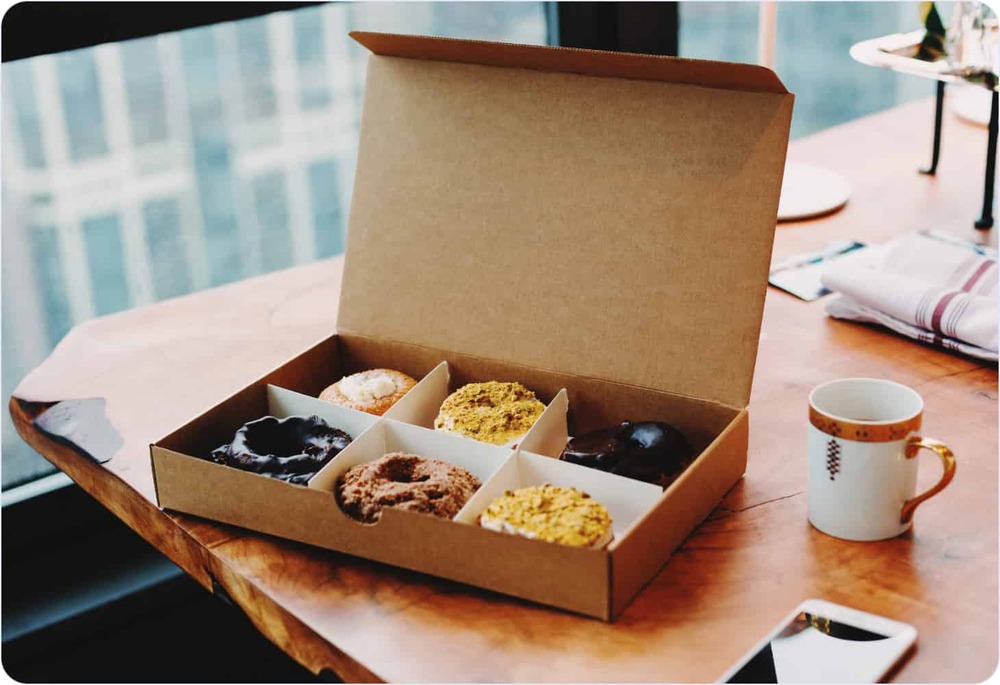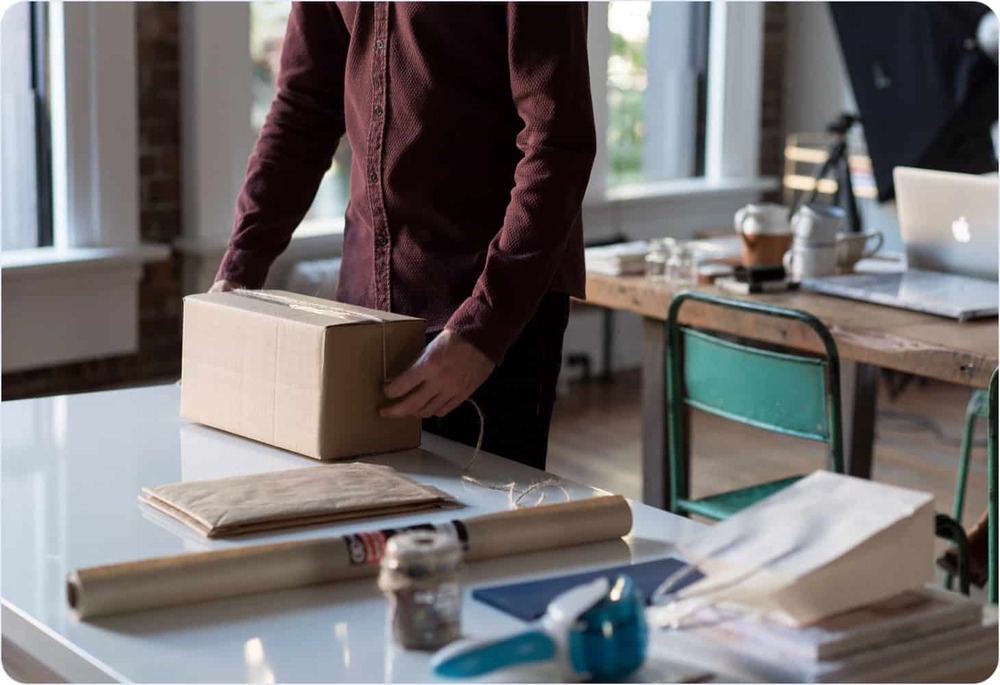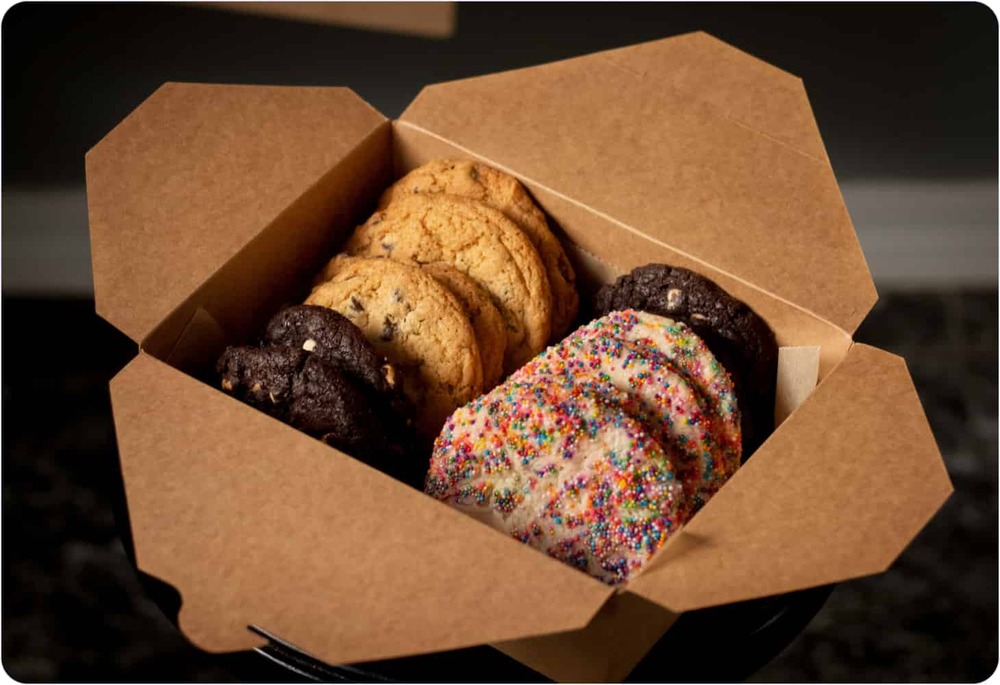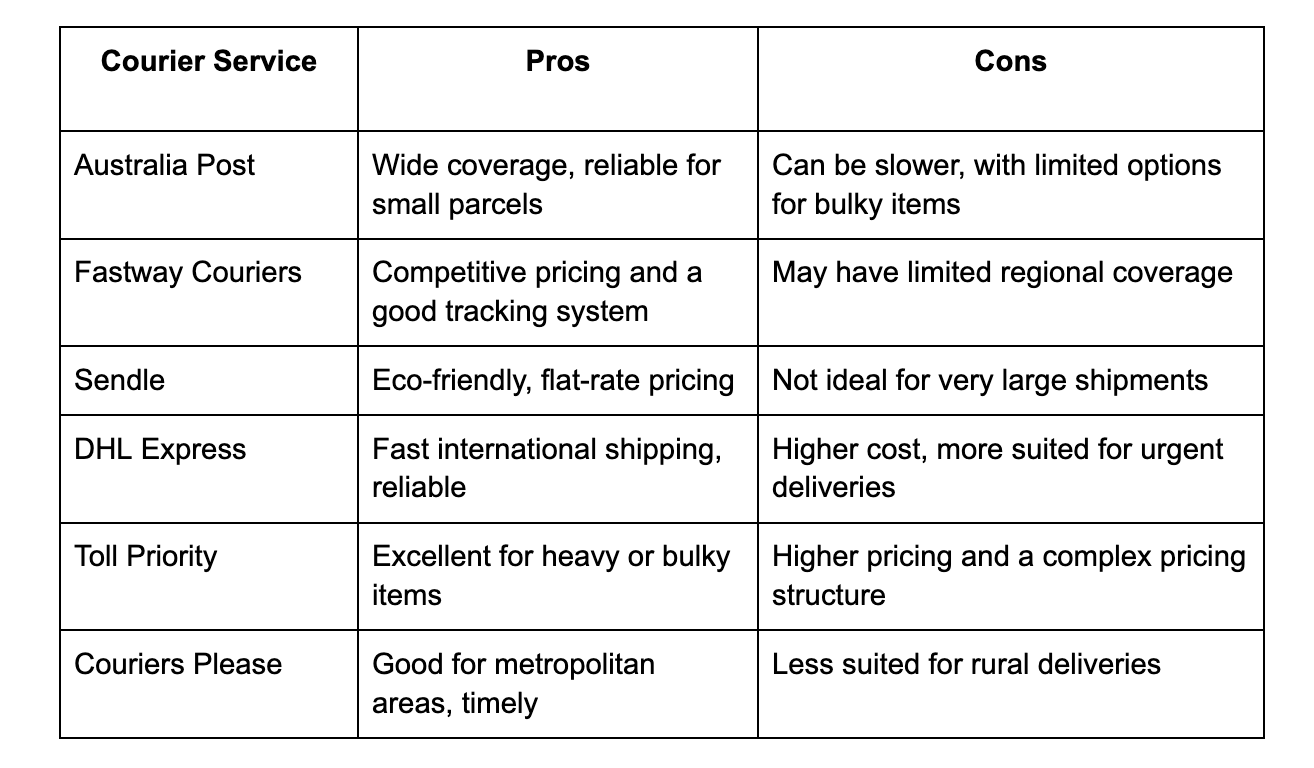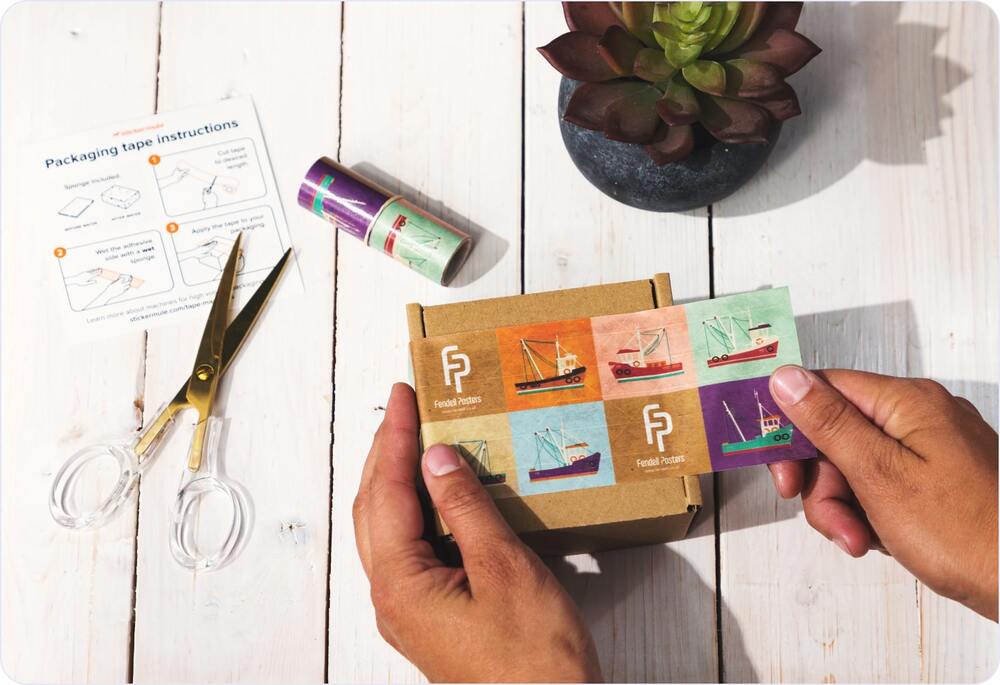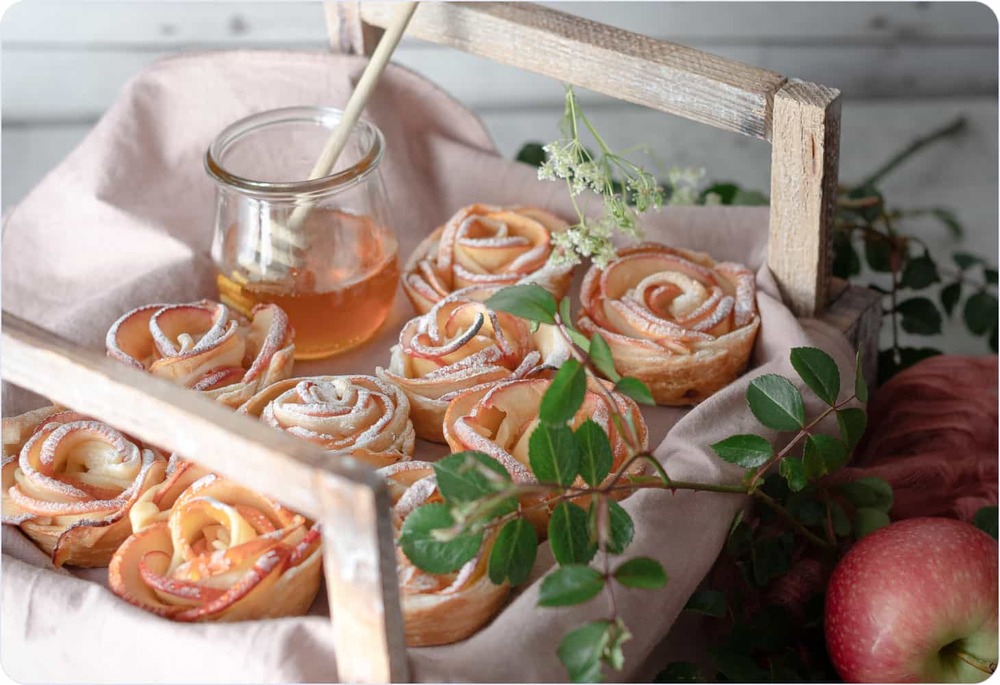The transportation of bakery products is an important aspect of the bakery business. The delight of a far-off friend or customer unwrapping a box of fresh, delicious cookies, cakes, or bread is unparalleled. However, achieving this involves more than just baking skills; it requires meticulous planning and execution of shipping strategies, especially understanding how to ship baked goods so they don't get stale or get damaged in transit.
This guide aims to dissect the complexities of shipping baked goods, ensuring they arrive in the same tantalising condition they left the oven. We'll explore everything from selecting the right treats to ship, packaging them securely, and navigating the logistics of transportation.
Understanding Baked Goods
Baked goods, with their irresistible aromas and flavours, come in an array of forms, each with its own unique set of characteristics. Take, for instance, the humble cookie, crunchy or chewy, laden with chocolate chips or nuts. Then there are cakes, from light and airy sponge cakes to dense, moist fruitcakes. And let's not forget the world of bread - crusty baguettes, soft dinner rolls, and hearty whole-grain loaves.
Each type demands specific handling and care, especially when it comes to shipping. Understanding these differences is crucial; it informs how we prepare, package, and eventually ship them to ensure they retain their intended taste and texture upon arrival.
Ideal Baked Goods for Shipping
When it comes to shipping baked goods, some items are more suitable than others. Here's a list of baked goods that are easy to transport:
- Cookies: Hardy in nature, cookies, especially those like shortbread, oatmeal, or chocolate chip, are ideal for shipping. They're less likely to crumble and can retain their freshness when properly packaged.
- Brownies and bars: Dense and moist, brownies and bars can withstand the rigours of shipping better than more delicate baked items.
- Quick breads and pound cakes: Their dense texture makes quick breads and pound cakes suitable for shipping. Loaves like banana bread or lemon pound cake travel well.
- Biscotti: Known for their dry and hard texture, biscotti are practically made for long journeys.
- Durable cakes: Certain types of cakes, such as fruitcakes or loaf cakes, are robust enough to endure transit.
- Hardy pastries: Pastries that don’t rely on high moisture content, like baklava or shortcrust pastries, can be good candidates for shipping.
Why shipping baked goods is challenging
Shipping baked goods presents a unique set of challenges, especially when considering how to ship baked goods fresh. Freshness is paramount; no one enjoys stale cookies or hard, dry cake. Then there's the issue of maintaining structural integrity; delicate pastries and intricately decorated cakes are especially prone to damage during transit. Temperature sensitivity is another hurdle. Items like chocolate-laden desserts can melt and lose their appeal if not kept at the right temperature.
These factors combined make shipping baked goods a delicate endeavour, requiring more than just placing them in a box and hoping for the best. It's about understanding these vulnerabilities and preparing accordingly to ensure your baked creations reach their destination as perfect as they left the kitchen.
Do you need to ship cakes and don't know where to start? We will help you! Follow this link!
Preparing Baked Goods for Shipment
Let’s get into how to package and ship baked goods for their journey. When choosing baked goods to ship, think about durability and longevity. Not all treats are made for travel. You want items that can withstand a bit of a journey without losing their charm. Here are some tips:
- Go for the sturdy ones: Cookies and dense cakes like pound cakes are your best bet. They're less likely to crumble or get squished.
- Avoid the overly moist: Steer clear of items that are too moist or creamy, like custard-filled pastries. They don't fare well in transit.
- Consider the shelf life: Biscotti, for instance, can last longer and are less prone to going stale quickly.
- Think about the frosting and decoration: Simple is better. Elaborate decorations might not survive the trip.
Freshness First: Ensuring Peak Quality
Keeping your baked goods fresh from the oven to the box is vital, particularly when you're figuring out how to ship fresh baked goods. Here’s how you can ensure they stay as fresh as possible:
- Cool before packing: Make sure your baked goods are completely cool before packing. Warmth can cause condensation, leading to sogginess.
- Use airtight containers: This helps to keep them fresh longer.
- Consider freshness packets: Silica gel packets or similar products can help control moisture in the packaging.
- Timing is key: Try to ship your baked goods as soon as they cool off. The fresher, the better.
Packaging Essentials
Now, let’s talk about packaging. Getting this right is crucial for ensuring your baked goods arrive in perfect condition. Here’s what you need to know:
- Use sturdy boxes: A strong, corrugated box will protect your goods from external pressure.
- Opt for food-safe packaging: Ensure all materials that come in direct contact with food are food-safe.
- Padding is important: Bubble wrap, foam, or even crumpled paper can provide cushioning.
- Consider insulation for temperature-sensitive items: Insulated shipping containers can be a lifesaver for chocolates or cream-based products.
Packing baked goods is not just about throwing them into a box. Here's a step-by-step guide:
- Layer wisely: Start with a layer of padding at the bottom of the box.
- Wrap the cake board: If you deliver a cake, use plastic wrap or food-safe wax paper to cover the cake board, preventing crumbs from migrating outside the box.
- Wrap each item individually: This provides extra protection and keeps them from sticking together.
- Use dividers for delicate items: Cupcake holders or dividers can prevent movement and damage.
- Fill empty spaces: Ensure there are no empty spaces in the box. This prevents shifting during transit.
- Seal tightly: Close the box securely with strong packing tape.
Shipping Considerations
Your carefully baked goodies require a thoughtful approach, especially when it comes to selecting your shipping partner and understanding the conditions under which your treats will travel.
Selecting the right shipping partner
Choosing a courier service is more than a mere logistical decision. It's about finding a partner who values their customers, has a good reputation, and works reliably. Here's what you should consider:
- Reliability is key. Opt for couriers with proven track records of timely and safe deliveries.
- Handling care is a deal-breaker. Ensure they are known for their gentle handling, particularly for your more delicate items.
- For those delectable items sensitive to temperature, a courier with climate-controlled shipping options is a must.
- Balancing cost and quality is crucial. The most affordable option might not always be the best in terms of service.
- Customer service can make or worsen your experience, especially when dealing with unexpected situations.
- Lastly, check their coverage area to ensure they can reach your customers wherever they may be.
Understanding shipping conditions
Getting to grips with the conditions under which your baked goods will be shipped is essential. The right temperature control, for instance, is non-negotiable for items like chocolates. Understanding how the courier handles packages is also crucial – are there special procedures in place for fragile items? Consider the transit times as well; the fresher your goods arrive, the happier your customers will be.
Besides, don’t overlook the importance of tracking; it's reassuring for both you and your customers to know where the package is at all times.
Looking for customers for your cakes? We can help! Sign up now
Factors that Influence Pricing
When considering the overall expenses involved in your business, a critical question often arises: how much does it cost to ship box of baked goods? This query is more than just about tallying up the costs of ingredients and baking processes. Several other factors play a significant role in shaping the total shipping cost.
Types of baked goods and packaging needs
Firstly, the type of baked goods you're shipping matters. More elaborate or delicate items, like intricately decorated cakes, may require special packaging to protect them during transit, potentially increasing costs. Simpler, sturdier items like cookies or brownies might not need as much protection, which can help keep costs down.
Distance and shipping costs
The distance your goodies need to travel is another significant factor in determining how much to ship box of baked goods. Shipping across Australia, for instance, will vary in cost depending on whether you're sending your treats from Melbourne to Sydney or from Perth to Darwin. Longer distances generally mean higher shipping rates. Also sending to regional or rural areas is generally more costly than shipping between capital cities.
Package Size and Weight Considerations
The size and weight of the package also play a crucial role. A larger, heavier box will cost more to ship than a smaller, lighter one. This is where efficient packaging becomes important; finding ways to securely package your goods without adding unnecessary bulk or weight can help reduce delivery costs. Additionally, calculating all the resources needed to deliver a cake is also essential. For instance, consider fuel prices, the length of the trip, and the time you may spend to complete the delivery.
Finally, the speed of delivery can affect the price. Express shipping options will get your baked goods to their destination faster, but they'll also add to the cost. If time isn't a pressing issue, opting for standard shipping can be a more cost-effective choice.
In summary, the cost of shipping baked goods depends on the nature of the items, the distance they need to travel, the size and weight of the package, and the speed of delivery. Balancing these factors effectively can help you manage shipping costs while ensuring your delicious creations arrive in perfect condition.
Courier Services Comparison Table
This table provides a snapshot of various courier services, highlighting their strengths and areas where they might not be the best fit. It's important to choose one that aligns with your specific needs, especially in terms of package size, destination, and delivery speed.
The legal dimensions of food delivery
Perhaps the most important thing that anybody who is involved in shipping food products should know about are the legal complexities. However, this goes beyond the simple knowledge of how to do your preparations and packing; it's an understanding of the legal framework governing food delivery in your area.
Food items to be shipped across Australia must abide by the set of laws enacted in each state, and one must have a firm understanding of those statutes associated with his or her business. This involves knowing the licencing needs, applying food safety standards, and seeing to it that your business functions are compliant with the localities’ laws concerning food.
Among the important legal considerations are the formulation of a user agreement and terms of service that may be implemented to suit your customers. This contract should have well-defined terms for your service provision and payment, with delivery times, and liability clauses clearly stipulated.
These legal documents should be well reviewed by a law professional to guarantee they are in accordance with Australian consumer law and also safeguard your business as well as your clients.
Health and safety in food delivery
In terms of health, the ideal thing that should be of paramount concern is to make sure every product dispatched out for sale is safe for use. All this begins with the operation in your kitchen, which starts to proceed all the way down to the final handover.
The current standards and practices found in the Australian and New Zealand Code on Hygiene and Food Safety are non-reversible. Your packaging procedure should be designed in such a way that it helps to maintain the freshness of those food items and avoid any kind of contamination.
A factor as important as labelling food. According to the Food Standards Australia New Zealand (FSANZ), as specified, your labels should provide all the essential information, such as ingredients, shelf life, and allergen warnings. This is not only a mandatory labelling requirement but also an important communication tool that tells your clients the proper way to make healthy eating decisions.
Moreover, consider insurance for your food delivery service. Insurance does not only keep your security assured, but it also protects you from any possible loss or damage to goods during the delivery process. It remains an important element of the legal and health issues associated with food delivery to secure both the business and your customers.
Cost-Effective Tips
To tackle the financial aspect of shipping baked goods, it's essential to strike a balance. You're looking to answer the question, "How much does it cost to ship baked goods?" while ensuring you don't compromise on the quality your customers expect and deserve.
Efficiently managing the shipping budget for baked goods, especially when considering "How much to ship baked goods," involves implementing straightforward strategies:
- For the purpose of reducing costs, develop a long-term relationship with one courier selected for better rates.
- Unify the parcel parameters of size and weight to simplify cost forecasting processes.
- With low damage and returns, consider investing in high-quality packaging.
- Focus on identifying and tracking inefficient shipping methods regularly.
- Make purchases in quantity to receive discounts.
- Go for insurance during shipment, especially when sending goods far from home.
- Pack the product in a cost-effective package that does not add extra weight.
- Initiate tiered shipping prices depending on the size of the boxes or orders.
Need to grow your bakery business? Do it with CakerHQ! Join us
Shipping fee offers
The use of creative special offers may serve as an efficient strategy for shipping cost management, ensuring both customer satisfaction and loyalty.
- Loyalty programmes: Incentivize and loyalize customers through a loyalty scheme. Provide a shipping discount or free shipping after big and repeated purchases. This motivates the customer to group their orders, thereby reducing the number of shipments while increasing their size, which is argued to be a cost-saving proposition.
- Seasonal or festive offers: Leverage seasonal spikes by offering off-peak prices at holidays or festive periods. For instance, a ‘Christmas Special’ that provides cost-effective shipping on orders exceeding another amount. This not only improves sales but also motivates bulk buying, which allows for hassle-free packing and shipping.
- Flash sales with combined shipping: Do flash sales periodically and make it possible for your customers to receive conformed shipping rates if they purchase multiple products. This motivates customers to maximise the sale by buying as many goods at a time, thus maximising the utilisation of shipping resources.
- Subscription services: Provide a monthly delivery model where the customers subscribe to receive their goods on a recurrent basis. This results in reliable and consolidated shipping, resulting in lower costs related to ad-hoc orders and deliveries.
- Volume discounts: Offer discounts for large-volume purchases on shipping only. This will prompt the customer to order in large amounts, resulting in a low frequency of orders and an overall cost of shipping per unit.
By employing these strategies, you can create a win-win situation: customers enjoy lower shipping expenses, and your cake making venture gains operational efficiency as well as customer retention. Such offers are not only beneficial in terms of shipping management and costs but also allow for building a strong customer base, leading to more sales.
Bakery Items That Don't Travel Well
While many baked goods can survive the journey from oven to doorstep, there are some bakery products that are notoriously tricky to transport. These items, often delicate or highly perishable, pose challenges that might lead to less-than-satisfactory results upon arrival. Here’s a list of such products:
- Cream-filled pastries: Items like éclairs or cream puffs, which contain whipped cream or custard, are particularly vulnerable. The cream can spoil or become unappetizingly soggy during transit, especially in warm weather.
- Highly decorative cakes: Cakes with intricate icing, delicate sugar work, or elaborate toppings can easily get damaged. The jostling and temperature fluctuations during shipping can ruin their appearance.
- Meringues: These light, airy treats are susceptible to humidity and can easily become chewy or lose their crispness in transit.
- Flaky pastries: Pastries like croissants or puff pastry items are difficult to ship due to their delicate, flaky nature. They can easily get crushed or become stale.
- Tarts and pies: These can be challenging to ship without damage to the crust or spillage of the filling, especially if they are fruit-based with a lot of moisture.
- Soft frosted cupcakes: The frosting on cupcakes can smear or get squished, ruining their aesthetic appeal.
When considering what baked goods to ship, it's crucial to assess their suitability for travel. Opting for sturdier, less perishable items can ensure that your customers receive the high-quality treats they expect.
Troubleshooting сommon issues
Even with meticulous planning, there are times when things go awry. Being prepared to handle these situations can make all the difference in maintaining customer trust and satisfaction.
Handling damaged goods
When navigating how to ship baked goods through the mail, handling delivery delays with transparent communication is crucial. The fact that you keep your customers informed of delays shows that the service is still important, even if the problem was with the courier.
When a shipment doesn’t arrive in perfect condition, it's important to address the issue swiftly.
- Provide a simple procedure for clients to report damage.
- Investigate the cause – was it a packing issue or a courier mishap?
- Offer discounts on future purchases or cover shipping costs.
- Use such incidents as learning opportunities to improve your packaging and shipping practiсes.
Enhancing the Customer Experience
Imagine your customer's delight upon receiving a package that’s not just a box but a treasure trove of personal touches. Handwritten notes that convey warmth, custom packaging that pops with your brand’s personality, and little surprises like a bonus treat or a seasonal decoration can elevate the unboxing experience.
Think about including recipe cards or baking tips; they're not just paper inserts but gateways to a more connected and enriching experience with your brand.
Gathering feedback for improvement
Picture feedback as a conversation, a chance to listen and evolve. It's about making your customers feel heard and valued. Encourage this dialogue through follow-up emails or a friendly note in the package. Make giving feedback as easy as pie with simple forms or direct social media interactions. Show that you don't just collect feedback but act on it, weaving customer suggestions into the very fabric of your business. This isn't just about improving; it's about building a community.
Marketing Your Shipped Baked Goods
The digital landscape is your playground, and social media is your stage. Use it to showcase your products, share customer stories, and connect with your audience. A website that’s easy to navigate with tempting images can draw customers in. Email marketing keeps them close, offering a sneak peek into new treats and special offers.
Collaborating with food bloggers and influencers can be like a megaphone, amplifying your brand to a wider audience. And don't forget the power of SEO; being visible in search engine results is like having a beacon that guides customers to your digital doorstep.
Building a brand around quality shipping
Crafting a brand that stands for quality shipping conveys reliability. Let every package sent be a testament to your commitment to quality. Share the stories behind your brand, creating a tapestry that connects you with your customers. Stellar customer service isn't an afterthought; it’s the heartbeat of your brand.
Showcasing glowing testimonials can be the social proof that tilts the scales in your favour. Transparency in your shipping processes builds trust, a foundation upon which loyal customer relationships are built.
Fine-Tuning Your Shipping Strategy
In summing up, successful shipping hinges on an efficient, cost-effective approach. It's about carefully choosing durable baked goods, ensuring freshness, secure packaging, and partnering with a reliable courier. Keeping on top of legal and health standards, along with smart cost management, is also key.
But there's more to it than just logistics. Enhancing customer experience through personalized touches, responsive feedback, and effective online marketing sets your service apart.
As you progress in your baked goods shipping venture, remember these practices are not just about sending parcels, but delivering joy.
